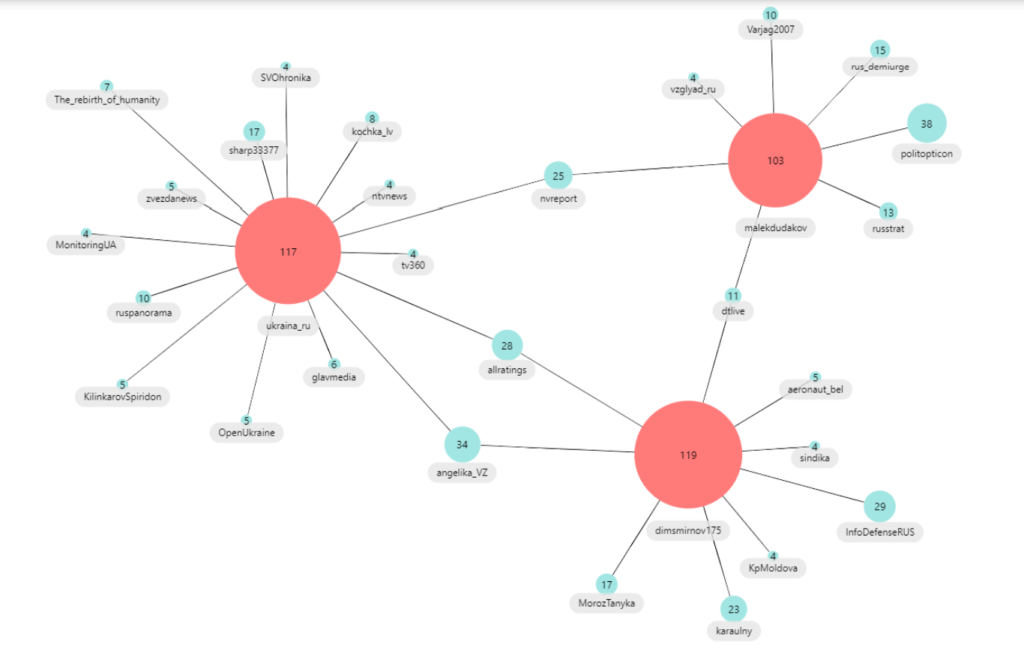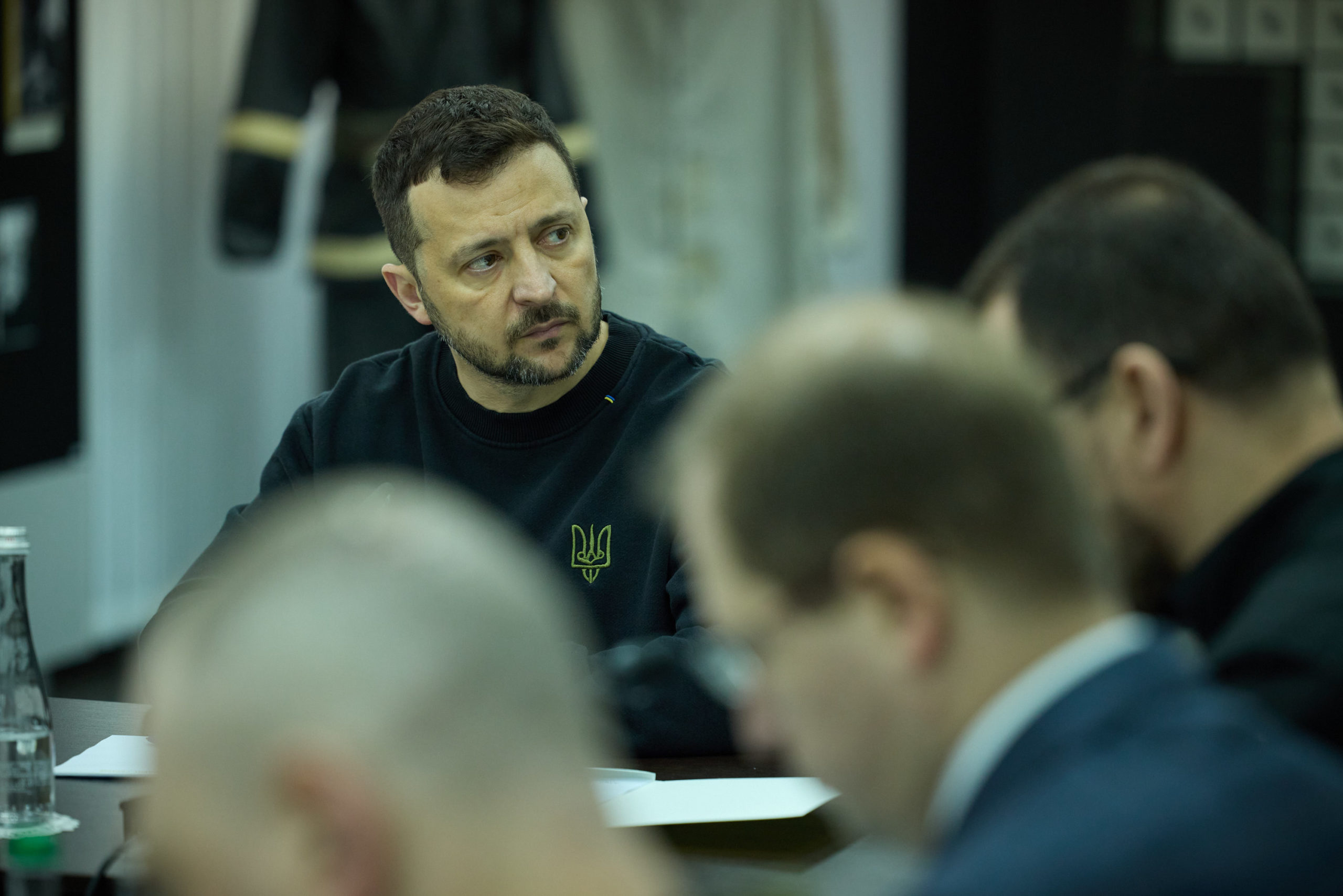In the ongoing Russia-Ukraine war, the battleground extends beyond the physical realm – Russia has waged a relentless information war against Ukraine, exploiting sensitive issues like corruption to erode public trust and sow discord within Ukrainian society.
According to a recent comprehensive study conducted by the Center for Strategic Communications and Information Security, in collaboration with the analytical team at Osavul, the topic of corruption has been actively weaponized by Russia as part of its hybrid aggression tactics against Ukraine.
The study, which analyzed over 130,000 posts, articles, and comments across various Ukrainian online platforms and social media channels between 1 July and 31 December 2023, unveiled 86 significant information incidents (averaging a new incident every two days) bearing the hallmarks of coordinated information operations. The study revealed 418 sources previously engaged in Russian information operations employing the theme of corruption, 462 sources with affiliations to Russia, and 223 sources identified as bots.
The incidents identified are promoting narratives aimed at discrediting Ukraine as a state, undermining its government, and fueling destructive processes within Ukrainian society.
It is important to note that despite the prevalent belief that corruption is Ukraine's main issue, European anti-corruption experts contend that the problem is greatly exaggerated – this inflated perception of corruption stems largely from its frequent highlight in media and public discourse.

The Center’s research team identified seven core narratives propagated by Russian actors, each tailored to exploit the sensitive issue of corruption and undermine Ukraine's resilience.
- 1. “Zelenskyy covers up corruption in Ukraine/Zelenskyy is linked to corruption” (25 incidents, 1,445 messages, 15.3 million views, 342,600 reactions).
This narrative directly associates the Ukrainian leadership, particularly President Volodymyr Zelenskyy, with corruption scandals, promoting the notion of a "rotten fish from the head down" and implicitly or explicitly inciting calls for a forceful change of government. One of the major incidents used to promote this narrative was spreading the false claim that Volodymyr Zelenskyy legalized corruption in Ukraine.
- 2. “Ukraine is a totally corrupt country” (22 incidents, 736 messages, 13.6 million views, 195,700 reactions).
This narrative portrays Ukraine as a completely corrupt state, unworthy of support and the sacrifices of the ongoing war. It aims to undermine Ukraine's image and erode public confidence in the country's institutions. A typical example of an incident within this narrative is the dissemination of photo/video materials purportedly showing Ukrainians criticizing the government for rampant corruption.
- 3. “Ukraine is losing the war due to corruption in power, and the West is pressuring Ukraine because of this” (18 incidents, 500 messages, 13.9 million views, 217,400 reactions).
Building upon the narrative of total corruption, this theme suggests that the alleged corruption within Ukraine's security forces and government is leading to setbacks on the battlefield, causing concern among Western partners.
Often, incidents linked to this narrative are based on Western media articles about corruption in Ukraine, heavily distorted by Russian propaganda, often reversing their original meaning.
- 4. “Ukraine is linked to Western elites through corruption ties” (7 incidents, 556 messages, 9.7 million views, 167,800 reactions).
This narrative depicts Ukraine as a mere colony of the West, exploited for criminal activities, profit-making, and money laundering schemes. This narrative suggests that Ukraine is not an independent state but a Western colony used for committing crimes, earning money, and laundering funds.
One incident in this narrative includes claims that Olena Zelenska's fund is allegedly involved in child trafficking, with the main "buyers" from Western countries.
- 5. “Calls for overthrowing the government due to its corruption” (3 incidents, 46 messages, 889,600 views, 16,800 reactions).
This narrative directly links the Ukrainian government with corruption, attributing any problems faced by the state to the alleged corruption of President Zelenskyy and his inner circle.
- 6. “Elites profit at the expense of ordinary servicemen” (5 incidents, 391 messages, 5 million views, 128,400 reactions).
This narrative suggests that military personnel bear the brunt of corruption, directly affecting their well-being and morale. This incident involved circulating messages based on a statement from a soldier’s wife in the 77th Brigade, who reported on "extortion in the army."
- 7. “Ukraine resells Western weapons” (4 incidents, 279 messages, 8.5 million views, 221,900 reactions).
According to this fake narrative, Ukraine's alleged corruption leads to the resale of Western-supplied weapons to third parties, including terrorist organizations like Hamas.
For example, within this narrative, there was an incident involving a baker in Israel who created a cake shaped like a gallows with Zelenskyy depicted as hanging from it. This was purportedly due to the high level of corruption in Zelenskyy’s government, which absurdly was claimed to have resulted in Ukrainian arms being transferred to HAMAS and used against Jews.
The report also highlighted eight distinct tactics employed by Russian actors to disseminate and reinforce these corrosive narratives.
Russian tactics range from coordinated amplification campaigns to the dissemination of fabricated stories and the exploitation of legitimate sources to distort narratives.
- 1. Utilizing sources masquerading as Ukrainian (56 incidents).
The affiliation of such resources with Russia was established based on lists from the Main Intelligence Directorate and Security Service of Ukraine, as well as using data from reputable Ukrainian and international organizations in this field. In the networks of such Telegram channels, the time between writing a post and reposting it is usually within 1-3 minutes.
Trending Now
- 2. Coordinated dissemination of identical or similar posts and comments across social media platforms (50 incidents).
This type of dissemination aims to create the illusion of support for certain statements or to engage in discussions with genuine users to draw attention to the message. Such comments are typically spread on pages of government representatives or Ukrainian media to increase audience reach.
For example, a coordinated campaign spread comments alleging that Zelenskyy and the USA profit from embezzling military supplies under posts by the Center for Countering Disinformation, TSN, Hromadske, and others. In this incident alone, 19 messages were posted using 11 accounts.
The center found that over six months, one of Russian coordinating channels – "Digital Army of Russia" – issued 11 tasks aimed at promoting the idea of pervasive corruption in Ukraine. Each task, besides the main text, included templates for comments in various languages for distribution on Ukrainian platforms.
- 3. Spreading fakes about corruption cases in Ukraine (22 incidents).
For example, a fabricated story circulated that Zelenskyy's wife had spent over $1 million on jewelry while her husband was requesting financial aid for Ukraine. The primary source cited was a Nigerian portal called The Nation Newspaper, which sounds similar to the more renowned The Nation. In mentions of this fake story, The Nation was cited as the source, misleading readers.
- 4. Cultivating conspiracy theories (19 incidents).
For instance, false information was circulated alleging that Zelenskyy's administration planned to hand over Ukraine's fertile chernozem soil to Western companies for chemical waste disposal, claiming a connection with Hunter Biden.
- 5. Distorting initial information and providing it with a different context and meaning (19 incidents).
In one incident, Russian messages misrepresented a BBC report, claiming it highlighted "high corruption in Ukraine" as a problem for Western donors. In reality, the BBC article actually discussed the importance of implementing anti-corruption measures during reconstruction efforts.
Additionally, while the Russian messages emphasized Ukraine's 116th position in the Transparency International corruption index, the BBC’s article noted Ukraine's steady progress in improving its ranking.
- 6. Using manipulative and overgeneralizing language (16 incidents).
Quoting the statement of Ukrainian official about the successes of Ukraine in the fight against corruption, the Tekegram channel KyivInfoPost, which is supervised by the Russian special services, writes: "Such corruption, as under Zelensky, has never happened in Ukraine in all the years of the country's existence!" There are no arguments, supporting this claim. Though ungrounded, the emotional vocabulary of the statement is expected to attract attention and manipulate.
- 7. Citing statements from third parties to lend credibility to claims (5 incidents).
An example is the dissemination of a quote taken out of context from Ukrainian psychologist Oleh Khomyak, who stated that Ukraine cannot live without corruption. This quote was shared alongside a brief 19-second video clip of the conversation. The context of the quote and the reasons for his use of such a statement were not provided.
- 8. Presenting anti-corruption efforts as evidence of high corruption levels (4 incidents).
Facts about anti-corruption efforts are being used to promote the image of a corrupt state. An example of this tactic is Russian sources spreading a statement by the head of the National Agency on Corruption Prevention. The statement calls for an inspection of all military enlistment offices for corruption, following a scandal involving the Odesa military commissioner.
By exploiting the sensitive issue of corruption, Russian actors seek to exacerbate societal tensions, fuel distrust in Ukrainian institutions, and ultimately weaken the country's ability to defend itself against ongoing aggression.
To counter these malicious efforts, the report emphasizes the need for a multifaceted approach involving various stakeholders, including the Ukrainian civil society, media community, international partners, and government agencies. By fostering media literacy, strengthening strategic communications, enhancing cooperation, and investing in analytical capabilities, the researchers believe that Ukraine can effectively counter the corrosive effects of Russian disinformation and emerge victorious in countering Russia’s disinformation.
Related:
- Corruption problem in Ukraine is exaggerated, European experts assert
- Ukraine ranks 104th out of 180 in 2023 Corruption Perceptions Index by Transparency International
- Poll: Corruption still major concern for Ukrainians despite war
- Corruption scheme of Ukraine's official revealed
- Hail corruption in Putin's Russia: we need more, not less, of it

